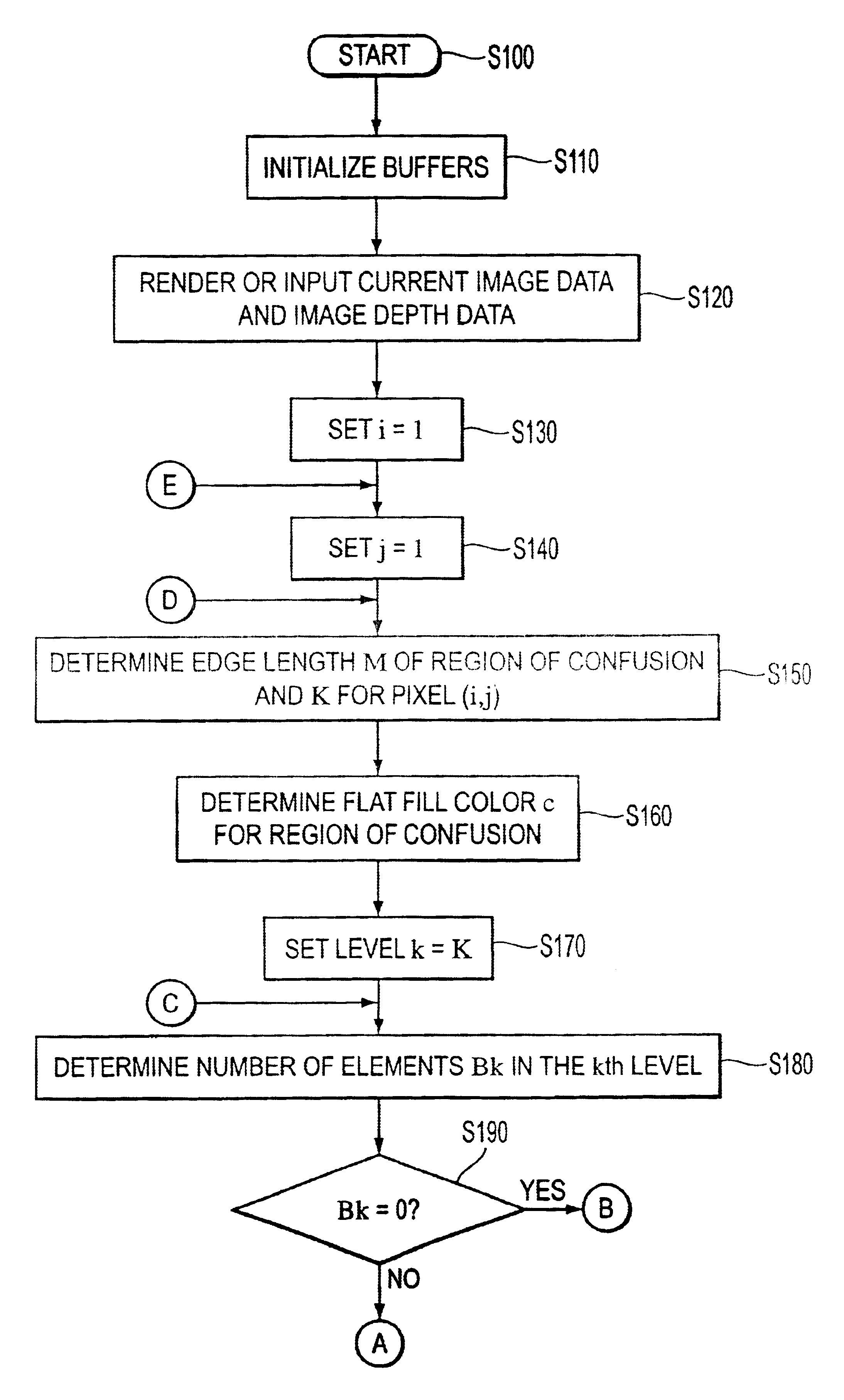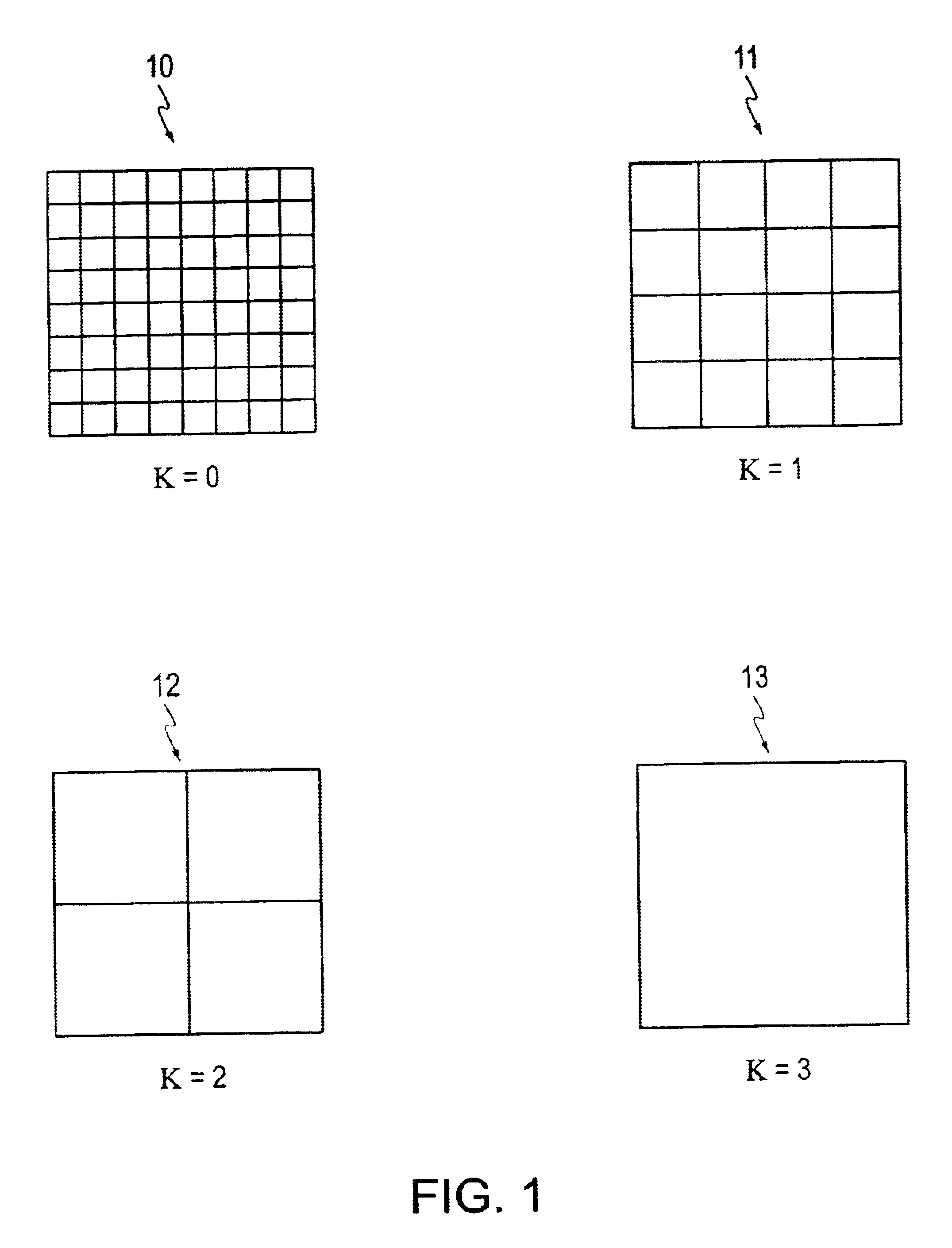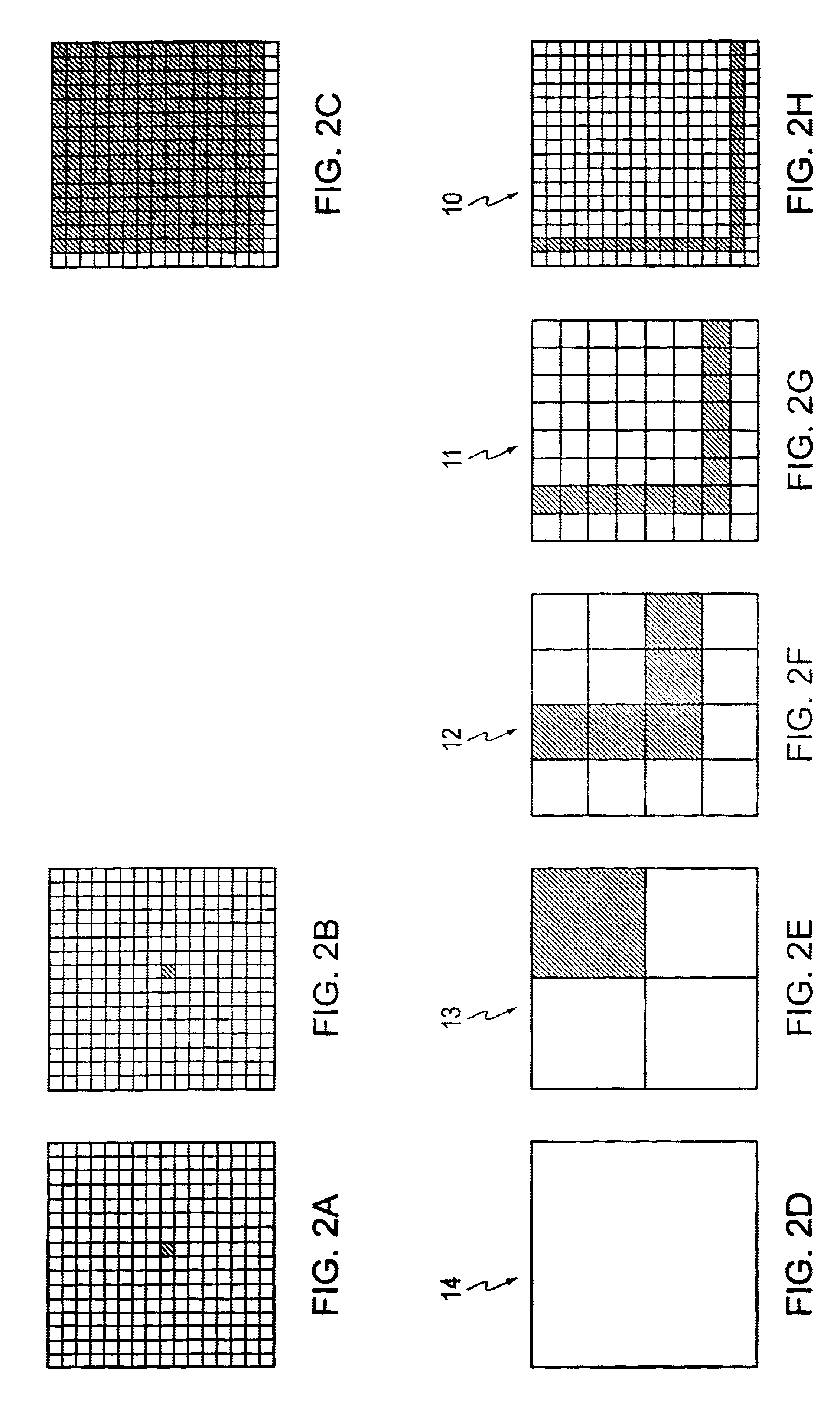Systems and methods for multi-resolution image defocusing
a multi-resolution, defocusing technology, applied in the field of defocusing a simulated image, can solve the problems of increasing the complexity of processing, the computational cost of a depth of focus calculation can be exceedingly high, and the contribution of each pixel can be combined using traditional computational costs,
- Summary
- Abstract
- Description
- Claims
- Application Information
AI Technical Summary
Benefits of technology
Problems solved by technology
Method used
Image
Examples
Embodiment Construction
FIG. 1 shows four sets of image elements of the pyramid representation used by the defocused image generating systems and methods of this invention. These four sets of image elements result from a square image having a side length equal to 8 (=2.sup.3) pixels. In the first set 10 of picture elements, corresponding to the k=0 or zero-th level, each image element is a square having a side length equal to 2.degree., or 1, pixel. Thus, the first set 10 of image elements, i.e., the 0 level, has the same resolution as the original input image.
In the second set 11 of picture elements, or the k=1 or first level, each of the picture elements in the second set 11 is a square having a side length equal to 2.sup.1, or 2, pixels. In the third set 12 of image elements, or the k=2 or second level, each image element is a square having a side length equal to 2.sup.2, or 4, pixels. The fourth set 13 of image elements, or the k=3 or third level, has a single image element having a side length equal t...
PUM
 Login to View More
Login to View More Abstract
Description
Claims
Application Information
 Login to View More
Login to View More - R&D
- Intellectual Property
- Life Sciences
- Materials
- Tech Scout
- Unparalleled Data Quality
- Higher Quality Content
- 60% Fewer Hallucinations
Browse by: Latest US Patents, China's latest patents, Technical Efficacy Thesaurus, Application Domain, Technology Topic, Popular Technical Reports.
© 2025 PatSnap. All rights reserved.Legal|Privacy policy|Modern Slavery Act Transparency Statement|Sitemap|About US| Contact US: help@patsnap.com



